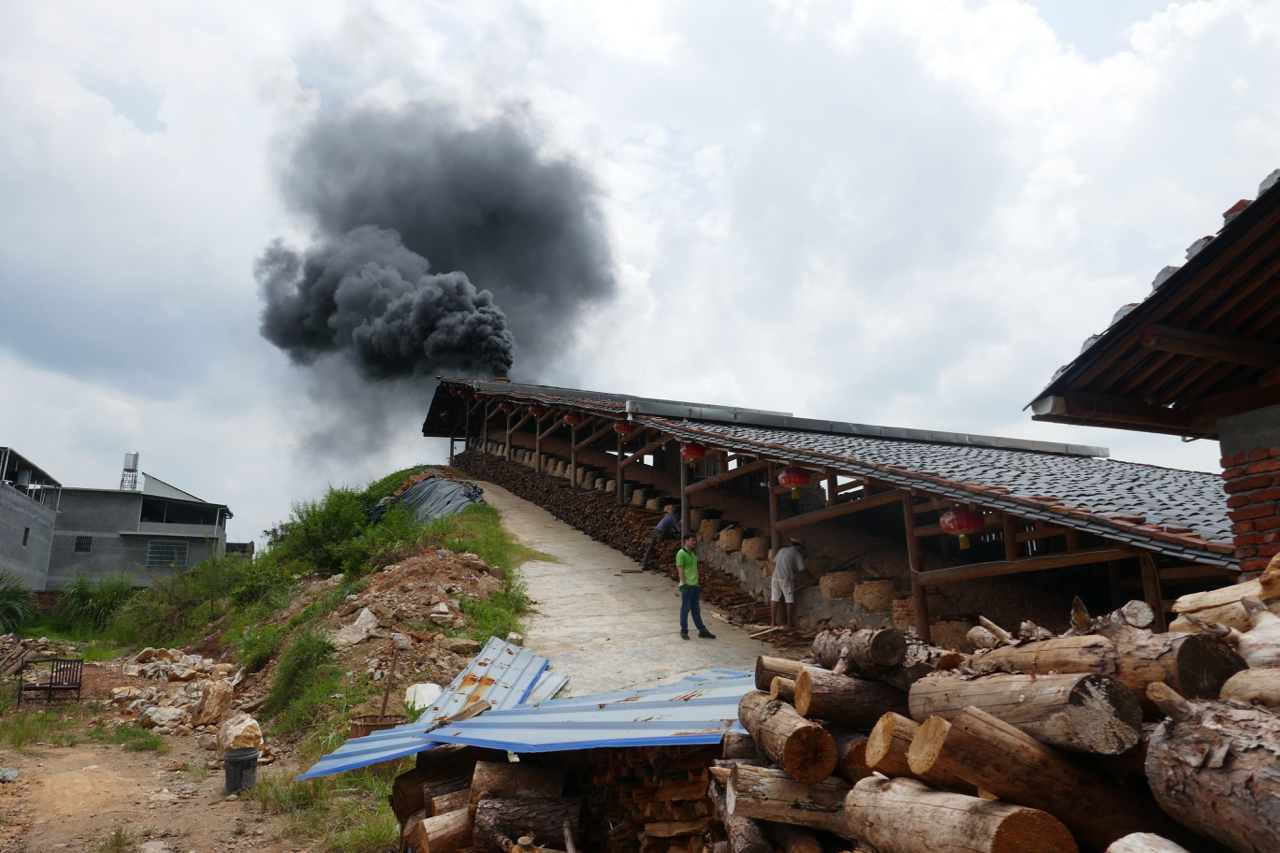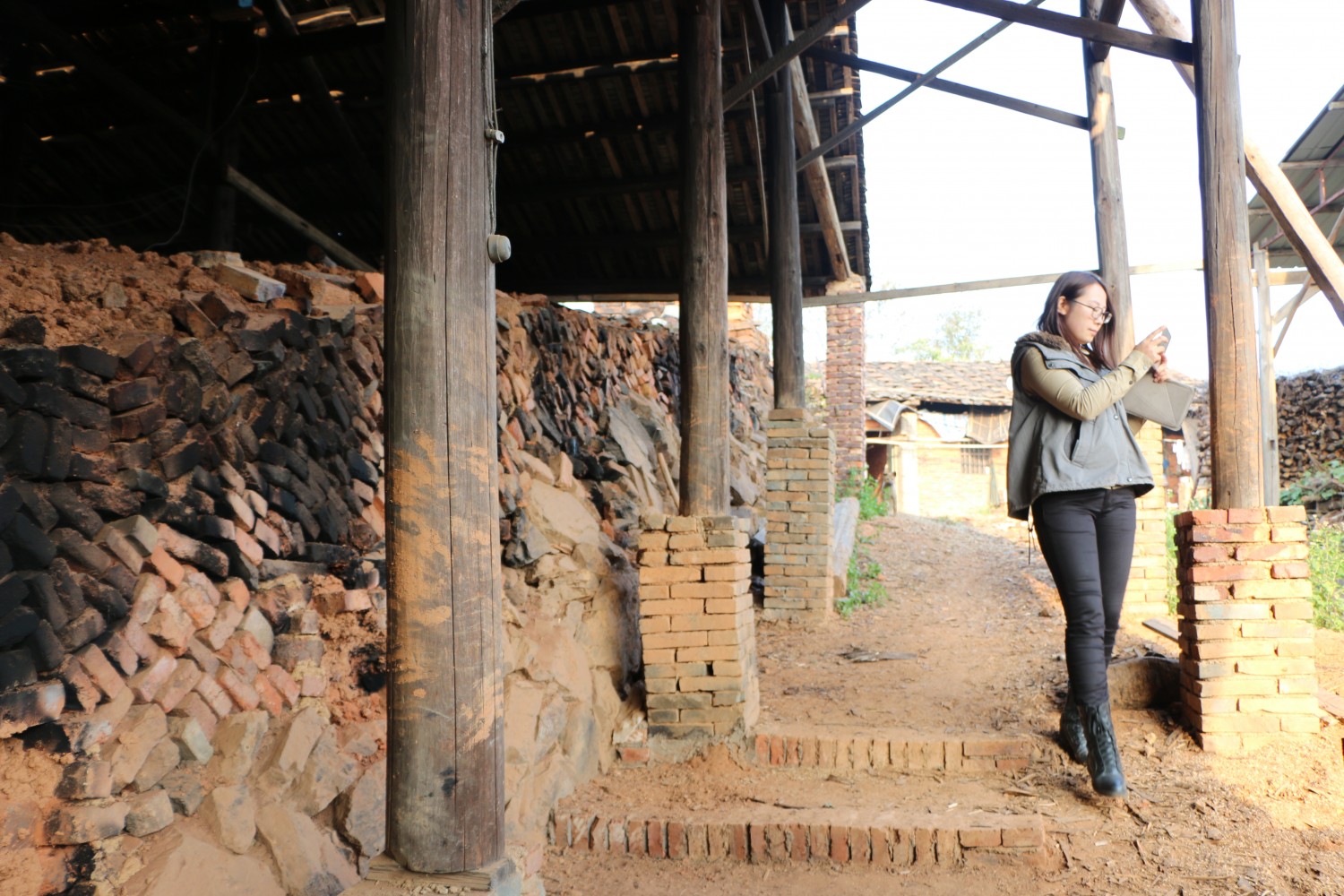To start the personal record of my journeys over the last 12 months I have put together some of the footage I have of the Kiln sites and Shard heaps around the Jian Ware site and further footage of the modern day production at one of the operating potteries using traditional techniques including raw glazing and firing in sagger in a wood fired dragon kiln.
https://www.youtube.com/watch?v=QN1oey6J9PA&feature=youtu.be
I suspected before I went to China that Jian Ware, like the ware of Longquan, Jingdezhen and most other pottery areas in China, was made from the local materials and these black bowls with a rough sandy body couldn’t have been made anywhere else, nor could the potters have made any other ware. The valley has only one clay, rich in iron and mainly kaolinitic, and what I originally thought was one glaze rock which was also high in iron. The combination of these two local materials gives both the colour and character to the glaze. No where else produced Hare’s Fur and the Oil Spots from the North, made in imitation of Jian ware, are very different pots altogether. (More of that in another blog.)
It is because I am a potter that what I went looking for at the kiln sites is those materials, for unlike the collectors of the archeologists, I want to know how the Jian pots were made and to try and infuse my own work with some of that same quality, something I call “the provenance of making.”
provenance, n.
Etymology: < French provenance origin, cause (1294 in Old French)
The fact of coming from some particular source or quarter; origin, derivation,
This is a cornerstone of my thesis, that Jian ware could not have been produced anywhere else but is a small valley a few kilometres away fro the rural village of Shuiji in Fujian Province in China. Authentic Jian ware derives its provenance because it is made from clay that is only found in this valley, one that is so high in iron that it becomes magnetic after firing, one that has just the right combination of minerals to give it its specific texture, one that without these seeming impurities that occur naturally in the clays dug from the flood plains of this tributary of the River Min would not have produced the necessary explosions of gaseous iron on its surface that in combination with the local glaze stone gave the world Oil Spot and Hare’s Fur Tenmokus. These pots could not be sourced, originated or derived from anywhere else. Like the Terroir of great wine this provenance as a part of its aesthetic.
Given the large numbers of fakes of Jian Ware produced in China this century, some even in official Communist Party kilns, it is provenance which that has become a focus for my research.When the Mongols invaded Northern China in the late 12th century, Jian ware became unavailable to the tea connoisseurs of the North so local kilns began to produce imitations, even going to the trouble of covering their clay bodies in iron to make it look like it had Jian provenance. During my recent trip to Museums across America it was my acquired knowledge of the wares provenance that built my ability and reputation in identifying authentic Jian ware. It started with a collection of 200 shards and 30 or so complete bowls collected at the site by James Marshall Plumer in 1935, so in the end with my knowledge of the materials, and the shards of Jian, it became obvious which works were wrongly attributed to Jian ware. When there was doubt to ask to have their provenance on hand resolved the issue.


i believe that you are right that Tenmoku ceramics were made only in the Jian kilns in Fujian province. They used quite a refractory local clay relatively high in alumina and iron and the glazes appear to have been made from the same clay with wood ash added. Similar but somewhat different blackware were made in Song times in northern China in Jizhou kilns using quite different raw materials with a body showing at the base that was much lighter in colour. The Ding kilns again in north China in Song times produced a “black Ding ware” again quite different from the Temmokus from Fujian. I would so like to see you work should it be published
Everything you say is true, Thanks for your input.
Your web site has superb web content. I bookmarked the website